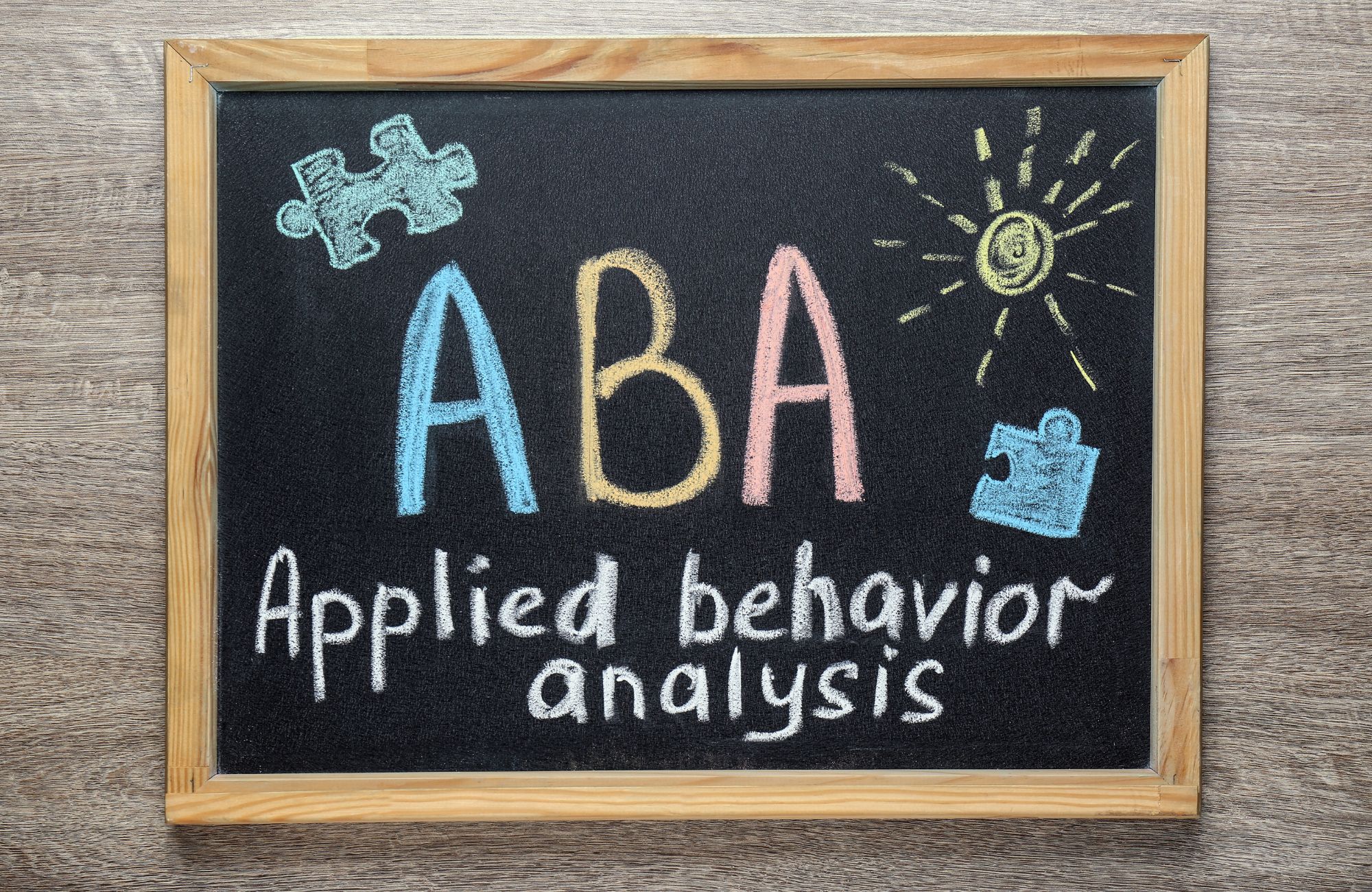Raising a child with autism comes with many questions, and one of the biggest is how to find the right support. According to the Centers for Disease Control and Prevention, about 1 in 31 children in the United States is diagnosed with autism spectrum disorder, making it more important than ever for families to understand effective treatment options. Among the most trusted and research-backed approaches is Applied Behavior Analysis (ABA) therapy. But what is ABA therapy for autism, and how does it help individuals build skills and improve their quality of life?
Understanding Applied Behavior Analysis
Applied Behavior Analysis (ABA) is a scientific approach that helps people, especially those with autism, learn new skills and improve their quality of life. It focuses on understanding how behavior works, how the environment affects it, and how positive change can be created through personalized strategies and measurable goals.
First developed in the 1960s, ABA has grown from early research into a flexible, child-centered therapy that uses natural settings and positive reinforcement. Today, it continues to evolve with a strong focus on evidence-based methods and improving everyday life for individuals.
How ABA Therapy Works
The foundation of ABA therapy rests on understanding the relationship between behavior and the environment. This relationship is often examined through the “ABC” framework:
- Antecedent: What happens immediately before a behavior occurs
- Behavior: The action or response that follows the antecedent
- Consequence: What happens after the behavior
This framework helps therapists and parents understand why certain behaviors occur and how different responses can influence whether those behaviors continue or change. For example:
Scenario 1:
- Antecedent: A child wants a toy but lacks the communication skills to ask for it
- Behavior: The child screams and throws items
- Consequence: An adult gives the child the toy
- Result: The child learns that screaming gets them what they want
Scenario 2 (With ABA intervention):
- Antecedent: Same situation, but the child has been taught to point or use a picture card
- Behavior: The child points to the desired toy
- Consequence: The child receives the toy and praise for communicating appropriately
- Result: The child learns that appropriate communication is effective
Positive reinforcement stands as one of the central strategies in ABA therapy. When a behavior is followed by something valuable to the person (a reinforcer), they’re more likely to repeat that behavior in the future. Reinforcers vary widely depending on the individual, they might include praise, access to a favorite toy, a brief break, or even something as simple as a high-five.
Importantly, effective ABA programs don’t just focus on decreasing challenging and problem behaviors. They place equal or greater emphasis on teaching new skills and alternative behaviors that serve the same function as the problematic ones.
ABA Methodologies and Approaches
ABA encompasses several teaching methodologies that can be used based on a child’s needs, learning style, and goals. The most common approaches include:
Discrete Trial Training (DTT)
DTT involves breaking skills down into simple, manageable steps taught in a systematic way. Each “trial” follows a clear sequence:
- The therapist presents an instruction or question (stimulus)
- The child responds
- The therapist provides an appropriate consequence (reinforcement for correct responses or prompting for incorrect ones)
This structured approach is particularly effective for teaching foundation skills like identifying objects, matching, and following basic instructions. For example, when teaching a child to identify colors, a therapist might show a red card and say, “What color is this?” When the child responds correctly, they receive immediate positive reinforcement.
Pivotal Response Treatment (PRT)
PRT focuses on targeting “pivotal” areas of development, such as motivation, responsivity to multiple cues, self-initiation, and self-management. Unlike the more structured DTT, PRT:
- Is child-directed and uses natural environments
- Incorporates the child’s interests and preferred activities
- Uses natural reinforcers related to the behavior
- Reinforces reasonable attempts, not just perfect responses
For instance, if a child is interested in playing with bubbles, the therapist might hold the bubble container and wait for the child to request “bubbles” before blowing them. The natural reinforcement (getting to play with bubbles) is directly related to the communication skill being taught.
Natural Environment Training (NET)
NET focuses on teaching skills in the environments where they’ll naturally be used. This approach:
- Follows the child’s interests and motivation
- Creates learning opportunities within everyday activities
- Promotes generalization of skills across settings
- Involves parents and caregivers in the teaching process
A NET session might take place during mealtime, bath time, or playtime, using these natural contexts to teach relevant skills like requesting, waiting, or sharing.
Early Start Denver Model (ESDM)
ESDM combines elements of ABA with developmental approaches and is specifically designed for very young children (12-48 months). Key characteristics include:
- Delivered within play-based activities
- Emphasizes positive affect and social engagement
- Focuses on multiple developmental domains simultaneously
- Includes parents as essential therapy partners
During an ESDM session, therapists might work on communication, social skills, and fine motor development, all within the context of a favorite play activity like building a tower or playing with toy animals.
Skills Developed Through ABA Therapy
ABA therapy can address a wide range of skill areas based on each individual’s needs and development level. Some of the core domains include:
Communication and Language Skills
Many children with autism experience challenges in language development, from delayed speech to difficulty with conversation skills. ABA therapy helps by teaching basic requesting and labeling, expanding vocabulary and sentence structure, building conversation skills like turn-taking, and introducing alternative communication methods like picture exchange or AAC devices when needed.
Social Skills
ABA helps children develop important social skills by teaching them how to understand facial expressions and body language, take turns and share, start and maintain interactions, develop play skills, follow social rules, and build friendships and relationships.
Self-Help and Daily Living Skills
ABA therapy also focuses on building independence by teaching personal hygiene, dressing and toileting, meal preparation and eating skills, safety awareness, community navigation, and time management and organization.
Behavioral Regulation
ABA provides strategies to:
- Reduce challenging behaviors by understanding their function
- Teach alternative, appropriate, and positive behaviors that serve the same purpose
- Develop self-regulation and coping skills
- Increase flexibility and adaptation to change
Academic and Pre-Academic Skills
Many ABA programs build educational foundations by teaching classroom routines, basic concepts like colors and numbers, pre-reading and reading skills, math concepts, writing and fine motor skills, and improving attention and task completion.
The ABA Therapy Process
The journey with ABA therapy typically follows a systematic process:
Assessment and Evaluation
Before therapy starts, a comprehensive assessment is done to understand current skills, challenges, and priorities. It usually includes direct observation, standardized tests, parent interviews, functional behavior assessments for challenging behaviors, and skills assessments across different developmental areas.
Development of Individualized Treatment Plans
Based on assessment results, a Board Certified Behavior Analyst (BCBA) creates a personalized treatment plan with specific goals, teaching strategies, behavior intervention plans if needed, data collection methods, and parent training. Each goal is broken into clear, achievable steps to help build larger skills over time.
Implementation of Therapy
ABA therapy may be delivered in various settings:
The frequency and intensity of therapy vary widely depending on individual needs, with early intensive programs sometimes recommending 25-40 hours weekly, while focused programs might involve fewer hours targeting specific skills.
Ongoing Data Collection and Program Adjustments
A key part of ABA is data collection to track progress and guide decisions. Therapists record skill development, behavior frequency, behavior intensity and duration, and the level of prompting needed. This helps the team make evidence-based adjustments to keep the program effective.
ABA Providers and Qualifications
Quality ABA services are provided by professionals with specific training and credentials:
Board Certified Behavior Analysts (BCBAs)
BCBAs are graduate-level professionals responsible for:
- Conducting assessments
- Developing treatment plans
- Supervising therapy implementation
- Training parents and other team members
- Analyzing data and adjusting programs
To become a BCBA, individuals must:
- Complete a master’s degree or higher in behavior analysis or a related field
- Complete supervised experience hours
- Pass a national certification exam
- Maintain ongoing continuing education
Registered Behavior Technicians (RBTs)
RBTs work directly with clients, implementing the plans designed by BCBAs. They:
- Deliver one-on-one therapy sessions
- Collect data
- Implement teaching procedures
- Work under the supervision of BCBAs
RBTs must complete a 40-hour training course, pass a competency assessment, and maintain certification through ongoing supervision and recertification.
Effectiveness of ABA Therapy
Research strongly supports the effectiveness of ABA therapy for individuals with autism. More than 20 studies show that intensive, long-term ABA programs can lead to meaningful improvements in communication, social skills, daily living abilities, academic performance, and reduced challenging and negative behaviors. Early intervention, especially before age 4, often brings the greatest benefits, though individuals of all ages can make progress with ABA.
While many experience significant improvement, outcomes vary based on individual needs, therapy intensity, family involvement, and other factors. Every person’s journey with ABA is unique, but evidence-based strategies provide a strong foundation for meaningful growth.
Finding the Right ABA Provider
Selecting a qualified provider is crucial for effective therapy. When evaluating ABA services, consider:
Credentials and Experience
- Verify BCBA certification and state licensure
- Ask about experience with similar cases
- Inquire about ongoing training and supervision
Treatment Approach
- Look for a balance of structured and naturalistic teaching
- Ensure emphasis on positive reinforcement
- Check that programming addresses skill building, not just behavior reduction
- Confirm parent/family training is included
Communication and Collaboration
- Expect regular updates and data sharing
- Look for a willingness to collaborate with other providers
- Ensure your input as a parent/caregiver is valued
Quality Indicators
- Individualized assessment and treatment planning
- Regular program review and adjustments
- Focus on functional, meaningful skills
- Clear transition and discharge planning
Conclusion
ABA therapy offers a research-backed, personalized approach to help individuals with autism build communication, social, academic, and daily living skills. By focusing on each person’s unique strengths and needs, ABA empowers meaningful progress and long-term growth. While each journey is different, the structured, evidence-based methods at the heart of ABA provide individuals and families with powerful tools for improving quality of life.
At Affinity ABC, we are dedicated to delivering high-quality, compassionate ABA therapy tailored to your child’s needs. Our experienced team of BCBAs and RBTs works closely with families to create personalized plans that foster real progress and lasting skills. Contact us today to learn more about our services and how we can support your child’s success.
FAQs
How does ABA therapy help autism?
ABA therapy helps individuals with autism and other developmental disorders by teaching essential skills through positive reinforcement while reducing challenging behaviors. It uses structured, data-driven approaches to improve communication, social skills, and daily functioning.
What is an example of ABA therapy?
A common example is teaching verbal behavior by having a therapist hold a desired toy, prompting the child to request it with words, and immediately rewarding successful communication with the toy and praise, gradually reducing prompts as skills develop.
How to do ABA therapy at home?
Learn basic principles from your child’s BCBA, create a consistent environment, use positive reinforcement, break skills into small steps, and practice during daily routines. Regular communication with professionals ensures alignment with formal therapy goals.
What are examples of ABA in the classroom?
Examples include visual schedules for transitions, token economy systems, breaking assignments into smaller parts, providing immediate feedback, and using peer modeling for social skills development.









